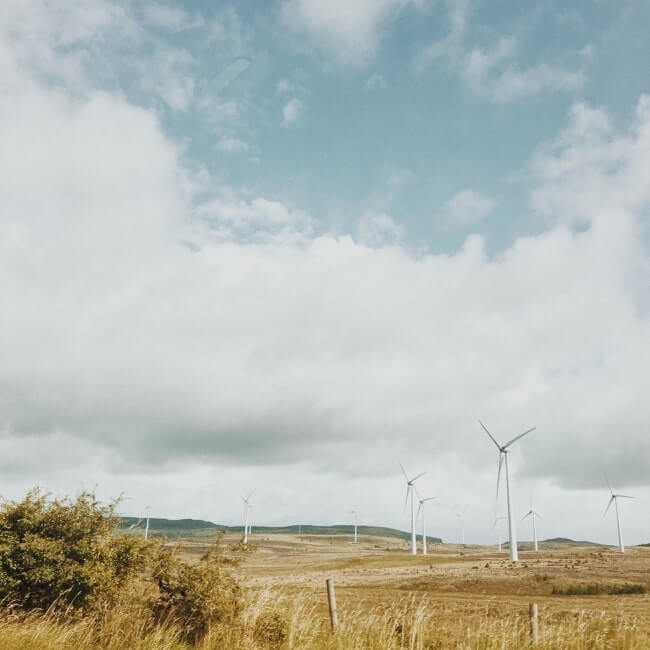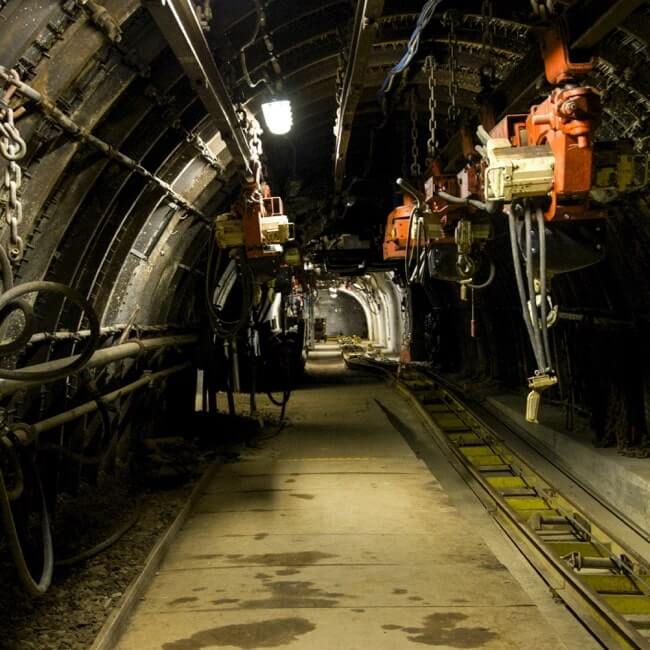Why Brazilian power distributors need to change fundamentally

Brazil needs to create the conditions so energy distributors whose concessions expire in the coming years become enablers of market opening.
Concessionaires should turn into distribution system operators, as is the case in the US, Europe and Colombia.
BNamericas talks to consultancy Thymos Energia's strategic affairs director Jovanio Santos to gain insight into why the change is necessary and what it entails.
BNamericas: What are the prospects for the renewable energy market?
Santos: The expansion of the Brazilian electricity matrix will be based on renewables. This is a fact. We have more or less 190GW of installed capacity and more than 200GW of grant applications to be analyzed by the regulatory agency [Aneel], consisting basically of solar and wind projects.
BNamericas: What is the feasibility of greenfield projects, while the free market price benchmark is low, interest rates are high and distributed generation (DG) is expanding?
Santos: In fact, we’re in a moment of superpositive hydrology, and our expectation is that the price will remain low for the next three years, as the reservoirs are at very high levels.
Another important factor that can influence the price downwards is the decontracted energy from Eletrobras.
A point to be highlighted is that the capex of solar energy projects has been decreasing, due to the fall in the price of modules and the exchange rate [in recent months].
On wind energy, there’s been a very significant decrease in capex over the last 10 years. But I don't think this drop will continue for the next decade, since the maturity of the technology is well consolidated. In addition, international wind turbine suppliers have been leaving Brazil.
Brazil hasn’t seen a significant increase in demand in recent years due to various economic factors. And there was, in parallel, the expansion of DG, which takes load off the system.
What we know is that the backlog of renewable projects is huge. So how to create demand? One route is the electrification of public transport, freight transport and light vehicles. Other possible paths are to couple this energy with green hydrogen production and energy self-production. This can give liquidity to projects and get them off the ground.
BNamericas: How does this scenario connect with the discussions on the renewal of energy distribution concessions?
Santos: The concessions are long term, 30 years. There’s an important component, which is the opening of the market, especially for retail consumers. The opportunity to make some change is now, because the way it is, the concession is an inhibitor of new technological solutions and products.
I was in Colombia recently, and the distributor there is already starting to provide services. It’s what we call a distribution system operator, or DSO, which can provide services and be a catalyst for market opening, for example, by owning DG assets and storage systems to even promote a better balance of ancillary services to end customers. This model is also very successful in Europe and the US.
We need to create the condition for distributors whose concessions will expire in the coming years, which correspond to more than 60% of the country's consumers, to be market opening enablers.
BNamericas: So we’re dealing with what type of distributor?
Santos: With the so-called distribution network operators, or DNOs.
And here there’s also the issue of metering: [electricity trading chamber] CCEE metering is unique and individual. Today, there are 32,000 individualized consumer units in the CCEE. The proposed opening in 2024, could represent potentially 72,000 more consumer units, so there will be more than 100,000 in the CCEE.
When it opens to low voltage, there will be another 7mn units in 2026 and 67mn in 2028. That's not counting public lighting or lower-income consumers, who we don't believe will migrate [to the free market].
Today, CCEE faces IT constraints to measure and account for the current number. The measurement aggregation model is fundamental to operationalize the market opening in a sustainable way.
BNamericas: Thymos recently certified Mosaic Fertilizantes' environmental benefits for using renewable energy. What is the differential of your certificate and how is the demand for this type of service in the country?
Santos: This was a methodology that we developed for about a year and a half. Through market research, we identified that when companies addressed the environmental issue, there was no effective quantification of the environmental benefit. I-RECs [renewable energy certificates], for example, qualify that the energy being used is renewable.
And we realized that many companies, to this day, do not effectively connect their ESG actions with some practice or anchor that is consolidated or strong enough.
So, we tried to contemplate two aspects: quantification of the environmental benefit, that is, how much a given agent has stopped emitting tons of CO2 equivalent [tCO2e] and that the actions are linked to the UN sustainability goals, including the use of clean and renewable energy and the fight against climate change.
A total of 62 Thymos customers have already been certified, helping to avoid more than 121,000tCO2e.
Subscribe to the leading business intelligence platform in Latin America with different tools for Providers, Contractors, Operators, Government, Legal, Financial and Insurance industries.
News in: Electric Power (Brazil)

The Brazilian bill empowering low-income consumers through solar innovation
BNamericas talks to the president of distributed generation association ABGD, Carlos Evangelista, about how the legislative proposal will boost the...

Brazil approves green hydrogen bill
The final text passed by the national congress is expected to boost the local market.
Subscribe to Latin America’s most trusted business intelligence platform.
Other projects in: Electric Power (Brazil)
Get critical information about thousands of Electric Power projects in Latin America: what stages they're in, capex, related companies, contacts and more.
- Project: Porto Norte Fluminense Thermoelectric Park
- Current stage:

- Updated:
1 day ago
- Project: Fótons de São Maximiano 05
- Current stage:

- Updated:
1 day ago
- Project: Fótons de São Maximiano 04
- Current stage:

- Updated:
1 day ago
- Project: Fótons de São Maximiano 03
- Current stage:

- Updated:
1 day ago
- Project: Fótons de São Maximiano 02
- Current stage:

- Updated:
1 day ago
- Project: Fótons de São Maximiano 01
- Current stage:

- Updated:
1 day ago
- Project: Asa Branca I Offshore Wind Complex (CEMAB-I)
- Current stage:

- Updated:
1 day ago
- Project: Lot 1: Maranhão - Tocantins - Goiás Transmission Line
- Current stage:

- Updated:
2 days ago
- Project: Fótons de São George 05 (Former Panorama 08)
- Current stage:

- Updated:
2 days ago
- Project: Fótons de São George 04 (ex Panorama 07)
- Current stage:

- Updated:
2 days ago
Other companies in: Electric Power (Brazil)
Get critical information about thousands of Electric Power companies in Latin America: their projects, contacts, shareholders, related news and more.
- Company: UTE GNA II Geração de Energia Ltda. (UTE GNA II Geração de Energia)
-
UTE GNA II Geração de Energia Ltda. (UTE GNA II) is a Brazilian power generation company established in 2015 and based in Rio de Janeiro which operates as a subsidiary of Gás Na...
- Company: Atlas Energia Renovável do Brasil S.A. (Atlas Energia Renovável do Brasil)
-
The description included in this profile was taken directly from an AI source and has not been edited or modified by BNamericas researchers. However, it may have been automatica...
- Company: Essentia Energia Renovável Spe Ltda. (Essentia Energia)
-
The description included in this profile was taken directly from an official source and has not been modified or edited by the BNamericas’ researchers. However, it may have been...
- Company: Lightsource BP Renewable Energy Investments Limited (Lightsource BP Brasil)
-
The description included in this profile was taken directly from an AI source and has not been edited or modified by BNamericas researchers. However, it may have been automatica...
- Company: Comerc Renew
-
The description contained in this profile was taken directly from an official source and has not been edited or modified by BNamericas researchers, but may have been automatical...
- Company: Companhia de Geração e Transmissão de Energia Elétrica do Sul do Brasil (CGT Eletrosul)
-
Eletrosul Centrais Elétricas (Eletrosul) is a privately held mixed ownership Brazilian corporation primarily engaged in the generation and transmission of electricityin the sout...
- Company: Enel Green Power Brasil Participações Ltda. (Enel Green Power Brasil)
-
Enel Brasil Participações Ltda. is the Brazilian subsidiary of Enel Green Power S.p.A. It is engaged in the generation, distribution and marketing of electric power. Currently,...
- Company: Atiaia Energia S.A. (Atiaia Renováveis)
-
Atiaia Energia, a joint venture by the Cornélio Brennand Group (90%) and Koblitz Energia (10%), searches for prospective renewable energy projects in the areas of small hydroele...
- Company: Cobra Brasil Serviços, Comunicações e Energia, S.A. (Grupo Cobra Brasil)
-
Cobra Brasil Serviços, Comunicações e Energia, S.A. (Cobra Brasil), a subsidiary of Grupo Cobra, is a power company engaged in generation and transmission of electricity. It is ...





